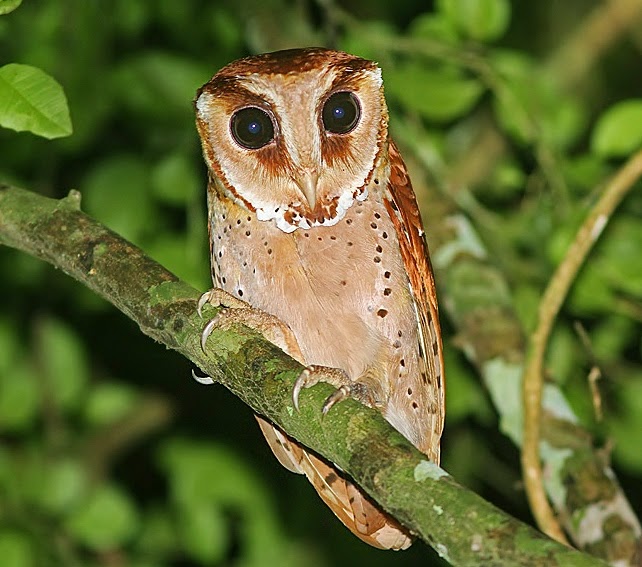 |
| Photo by Peter Ericsson (Owl Pages) |
Common name:
oriental bay-owl (en); coruja-da-baía-oriental (pt); phodile calong (fr); lechuza cornuda (es); maskeneule (de)
Taxonomy:
Order Strigiformes
Order Tytonidae
Range:
This species found in south-east Asia from Bangladesh and southern China down to the Indonesian islands of Borneo, Sumatra and Java. There was also a population in the island of Samar, in the Philippines, which apparently became extinct during the 20th century.
Size:
These birds are 23-33 cm long and weigh 255-310 g.
Habitat:
The oriental bay-owl is found in moist tropical forests and mangroves, as well as in fruit tree plantations and cultivated areas near forest edges. they are present from sea level up to an altitude of 2.200 m.
Diet:They feed on small rodents, bats, small birds, lizards, frogs, and large insects such as beetles and grasshoppers.
Breeding:
Oriental bay-owls breed in March-July. They nest in tree holes, rotten tree trunks or stumps, or cavities, where the female lays 3-5 eggs. There is no available information on the incubation and fledgling periods.
Conservation:
IUCN status – LC (Least Concern)
This species has a very large breeding range, but is considered to be very rare throughout most of this range. The population is suspected to be stable in the absence of evidence for any declines or substantial threats.







